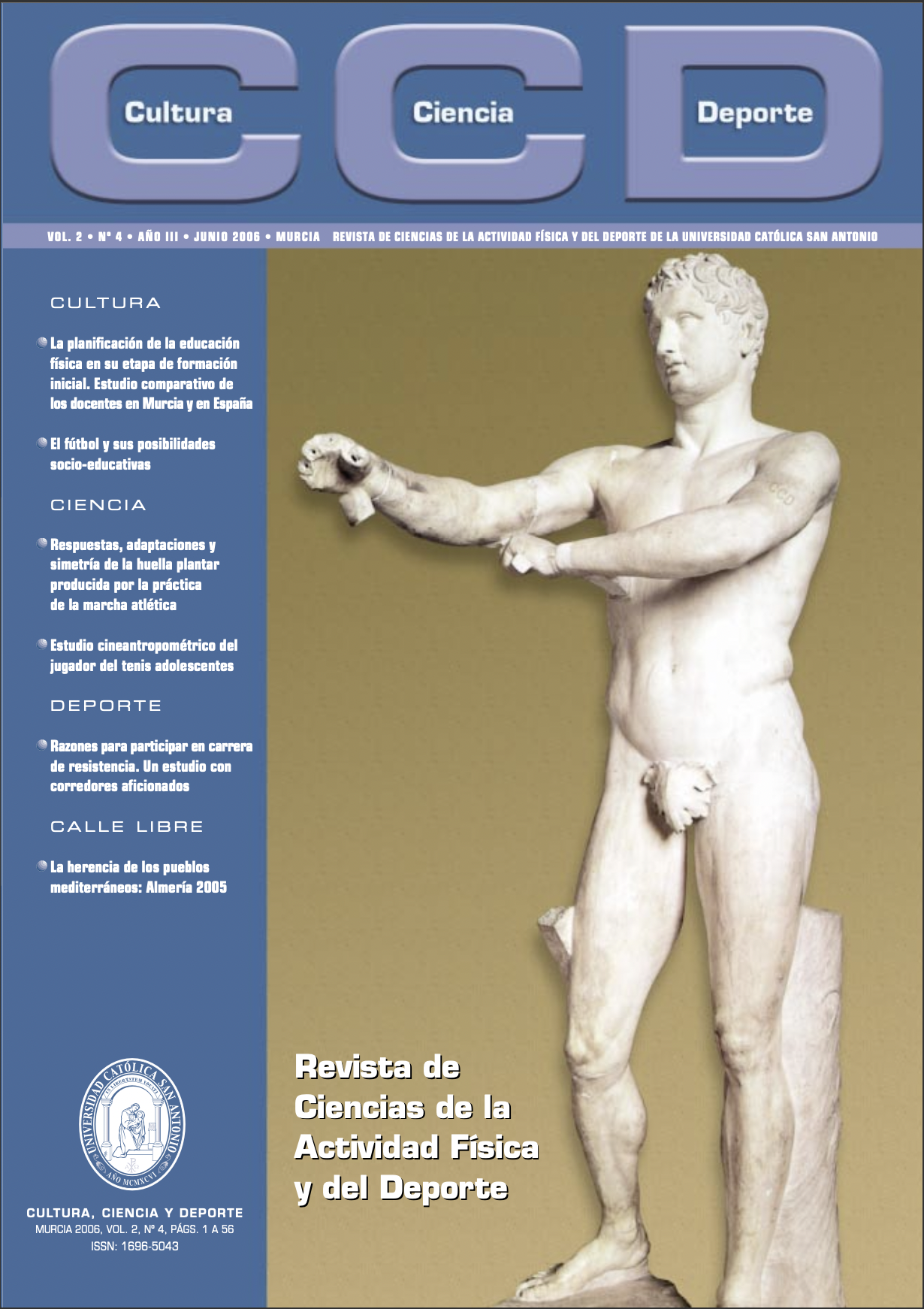Estudio cineantropométrico del jugador de tenis adolescente. (Cinematic anthropometric study of adolescent tennis players).
DOI:
https://doi.org/10.12800/ccd.v2i4.172Resumen
El propósito de este estudio fue aproximarse al perfil cineantropométrico de jugadores de tenis de edad adolescente. Para ello se seleccionaron 75 jugadores de tenis (47 varones y 26 mujeres) a los cuales se les determinó el perfil antropométrico, composición corporal y somatotipo, mostrando a su vez las diferencias en cuanto al género. Todas las valoraciones se realizaron siguiendo las recomendaciones del Grupo Español de Cineantropometría, los tenistas fueron evaluados a la misma hora del día. Los resultados muestran diferencias significativamente mayores en los tenistas en peso, talla, perímetros bioestiloide y bicondíleo húmero, así como en diámetros en brazo contraído y perímetro del muslo y pierna. A su vez, las tenistas muestran un mayor porcentaje de grasa corporal y un menor porcentaje de masa ósea, no existiendo diferencias significativas respecto al porcentaje de masa muscular. El somatotipo marca una tendencia ecto mesomórfica para el género masculino, y una tendencia meso endomórfica para el género femenino. El estudio cineantropométrico del tenista adolescente permitirá una aproximación de referencia al perfil funcional del tenista y contribuir al máximo rendimiento deportivo.
Palabras clave: tenis, composición corporal, antropometría, somatotipo, adolescentes.
===
Abstract
The aim of this study was to approach to the anthropometric profile of young tennis players. Seventy five tennis players (47 males and 27 females) participated in this study. All the evaluations were made following the recommendations of the Spanish Group of Kineanthropometric, the tennis players were evaluated to the same hour of the day. The results show significantly greater differences in the tennis players in weight, carves, perimeters styloid process, humerus epicondyle and femoral epicondyle, as well as in diameters in contracted arm and perimeter of the thigh and leg. As well, the tennis players show to a greater percentage of corporal fat and a smaller percentage of bony mass, not existing significant differences with respect to the percentage of muscular mass. Somatotype marks to a est-mesomorphy tendency for the males, and a tendency meso- endomórphy for female. The Kineanthropometric study of the adolescent tennis player, will allow an approach of reference to the functional profile of the tennis player and to contribute sport yield to the maximum.
Key words: tennis, anthropometric, somatotype, adolescent.
Descargas
Cómo citar
Número
Sección
Licencia
Los autores que publican en esta revista están de acuerdo con los siguientes términos:- Los autores conservan los derechos de autor y garantizan a la revista el derecho de ser la primera publicación del trabajo al igual que licenciado bajo una Creative Commons Attribution License que permite a otros compartir el trabajo con un reconocimiento de la autoría del trabajo y la publicación inicial en esta revista.













